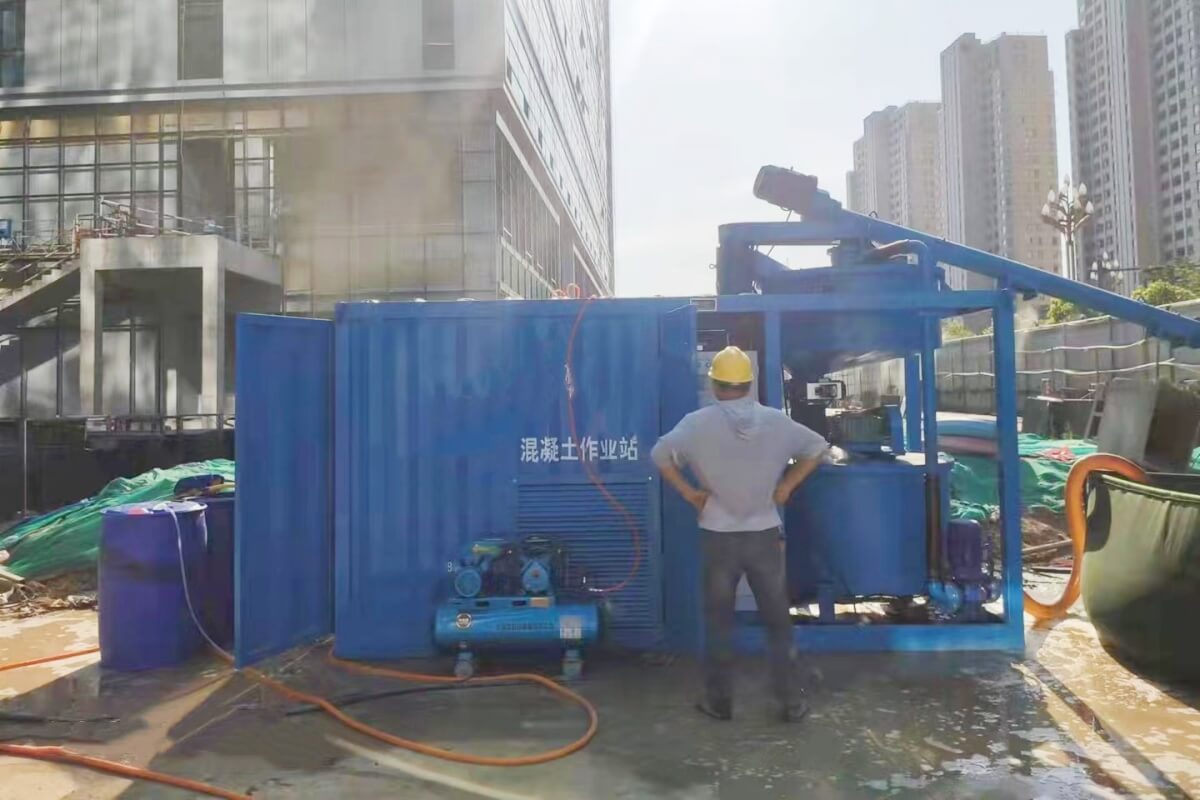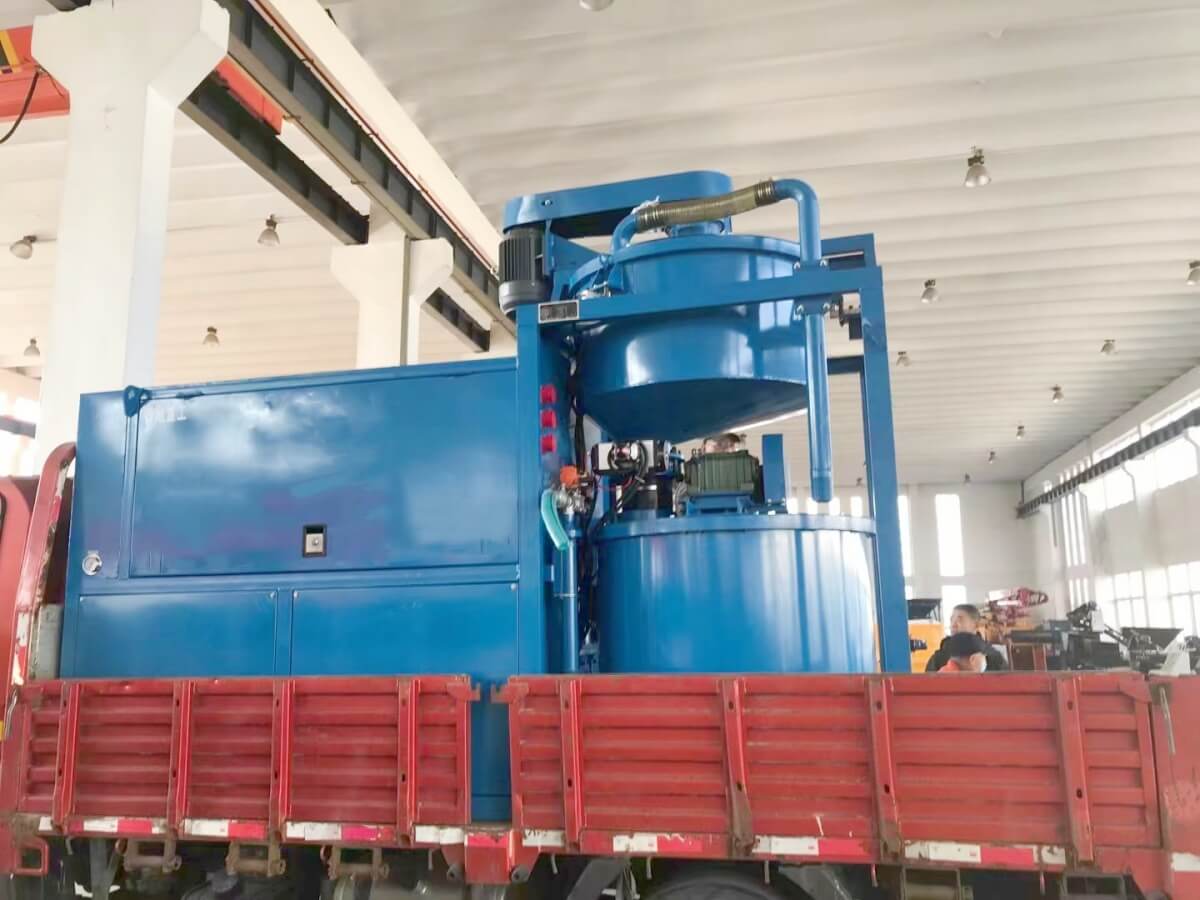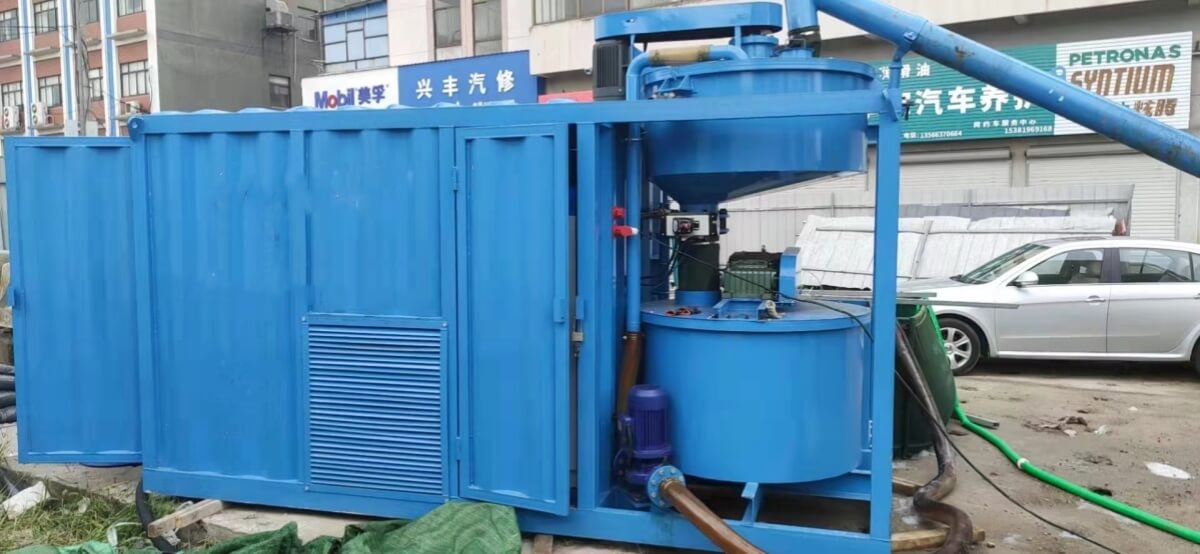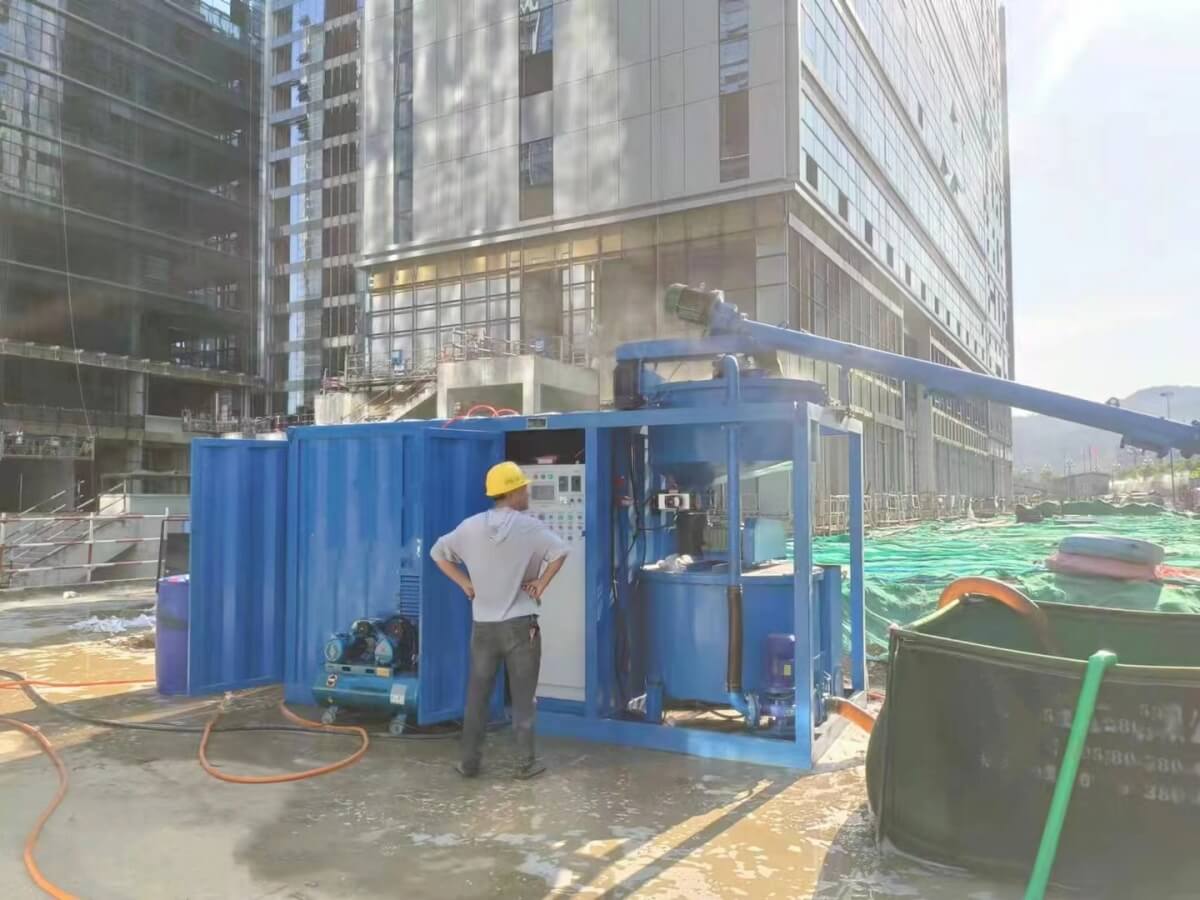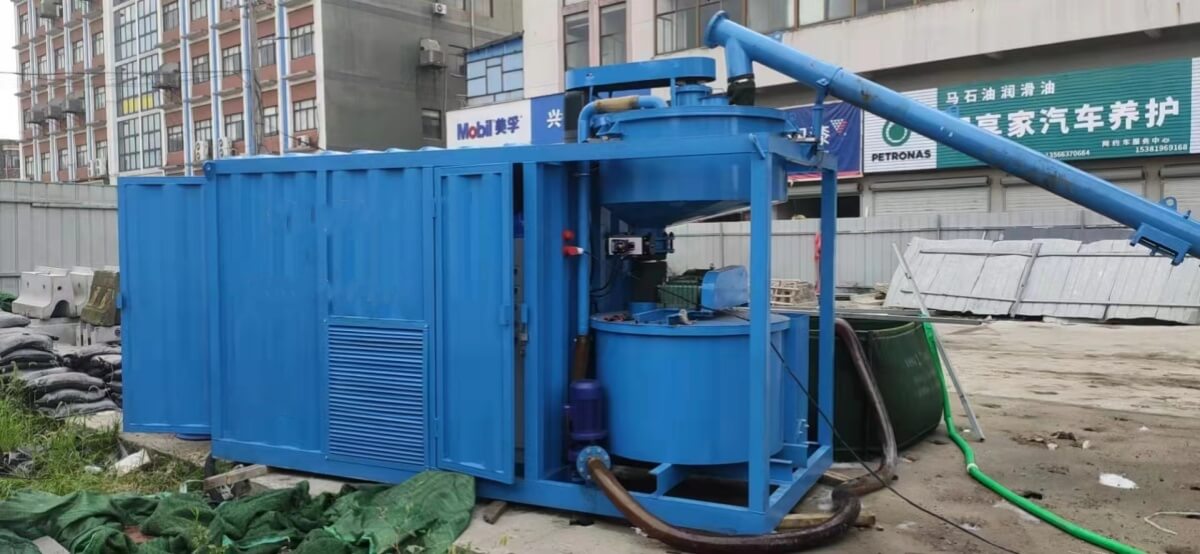Foam concrete plant for tunnel void filling
A foam concrete plant for tunnel void filling is a specialized facility designed to produce foam concrete, a lightweight, highly flowable material used to fill voids in tunnel construction. A foam concrete plant for tunnel void filling offers a versatile, efficient, and sustainable solution for modern tunnel construction. Its ability to adapt to challenging environments, reduce loads, and provide insulation makes it an ideal choice for projects where traditional materials may fall short. As tunneling technology advances, foam concrete is poised to play a pivotal role in enhancing safety, durability, and cost-effectiveness in underground infrastructure.
Foam concrete plant is widely adopted in metro systems for lightweight backfilling and void filling behind tunnel linings.
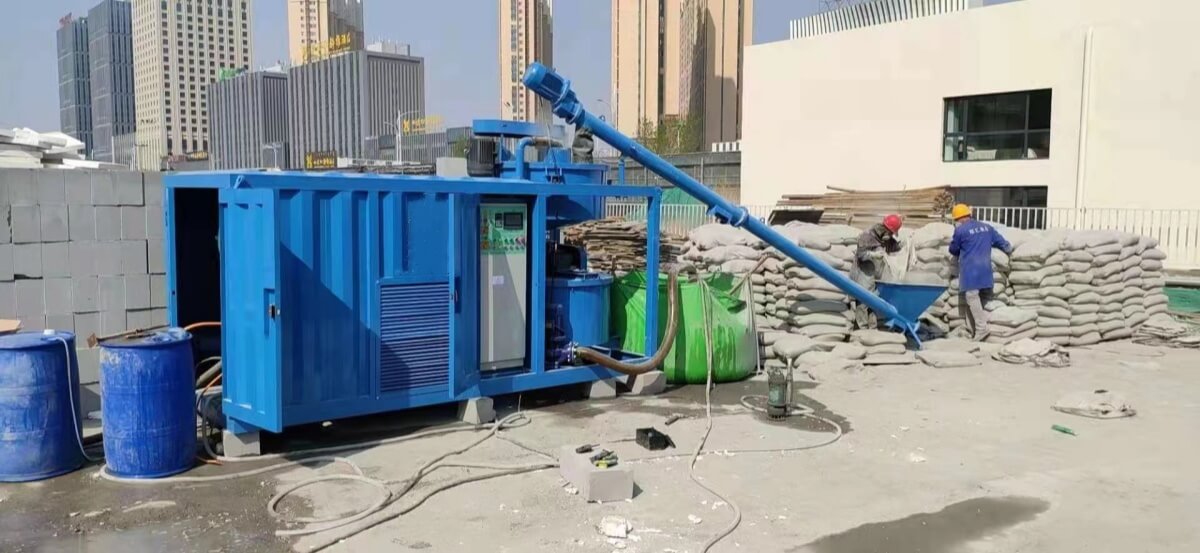
Foam Concrete for Tunnel Void Filling Features
Lightweight and High Flowability:
Foam concrete has a density ranging from 300–1,600 kg/m³, allowing it to fill voids without adding significant load to the tunnel structure.
Its self-leveling and self-compacting properties enable it to flow into irregular spaces and harden in place, eliminating the need for vibration or compaction.
Thermal and Acoustic Insulation:
Provides thermal insulation, reducing temperature differentials between the tunnel and surrounding rock.
Offers soundproofing benefits, minimizing noise transmission in tunnels.
Fire Resistance:
As an inorganic material, foam concrete is non-combustible and contributes to fire safety in tunnel environments.
Cost Efficiency:
Reduces material and labor costs compared to traditional void-filling methods (e.g., grout or concrete) due to faster application and minimal waste.
Durability:
Resistant to freeze-thaw cycles, chemical corrosion, and moisture, ensuring long-term stability in underground environments.
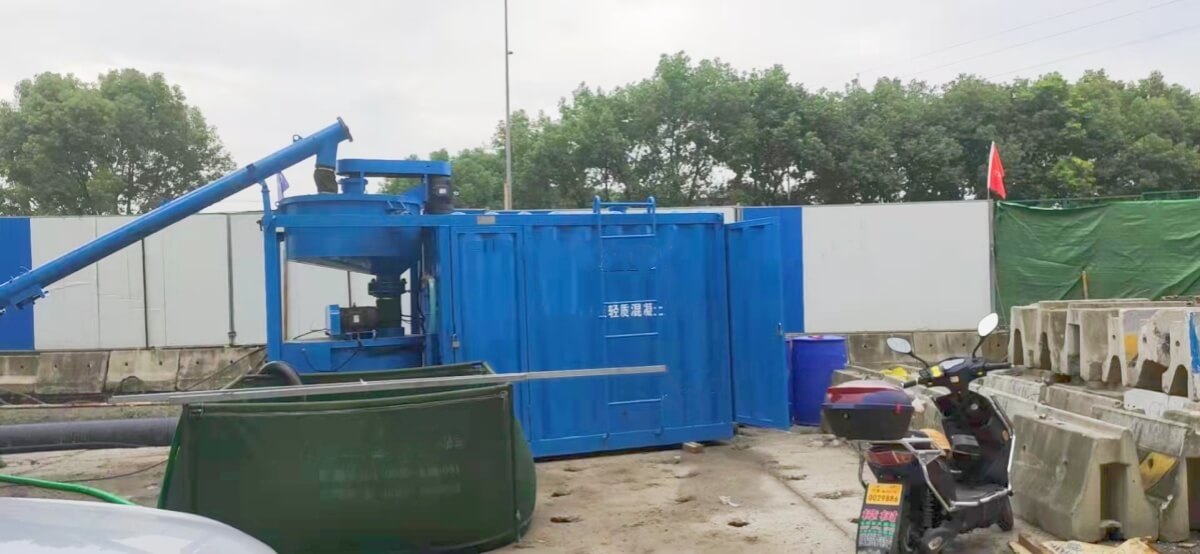
Applications in Tunnel Construction
Void Filling:
Fills spaces between tunnel linings and surrounding rock, providing structural support and preventing ground settlement.
Used in areas with irregular geometries or hard-to-reach sections, such as behind tunnel segments or in overcut zones.
Tunnel Backfilling:
Replaces conventional backfill materials (e.g., soil or gravel) in applications like subsea tunnels (e.g., the Strait of Messina Bridge project) or metro tunnels, where lightweight materials reduce loads on deep excavations.
Grouting Alternative:
Serves as a grout substitute in situations requiring high flowability, such as filling voids in fractured rock or karstic formations.
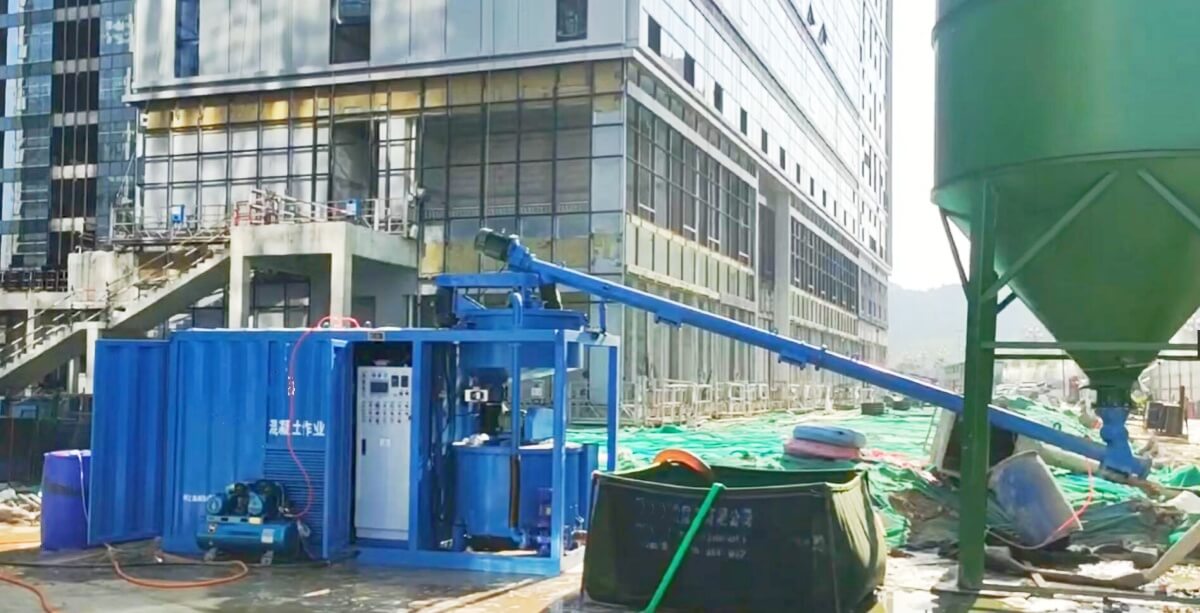
Advantages of Using a Foam Concrete Plant
Customizable Properties:
Allows adjustment of density, strength, and flowability to meet specific project requirements.
Can incorporate additives (e.g., fibers, accelerators) to enhance performance.
Rapid Application:
High production rates and fast setting times enable quick void filling, minimizing construction delays.
Environmental Benefits:
Utilizes industrial by-products (e.g., fly ash) as raw materials, promoting sustainability.
Reduces carbon footprint by minimizing material transport and waste.
Safety:
Eliminates the need for heavy machinery in confined spaces, reducing risks to workers.
